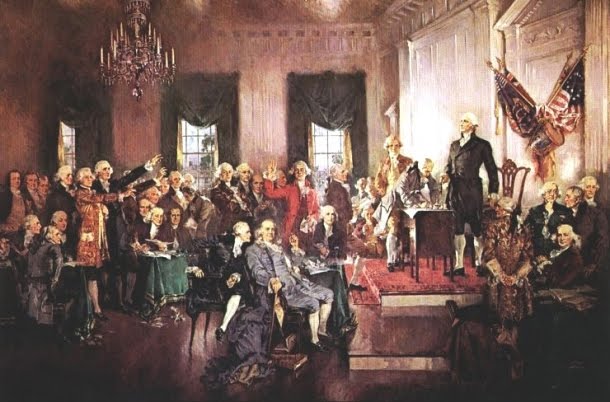From Personal Liberty Digest:

The North Dakota Oil Boom
March 16, 2012 by Chip Wood

PHOTOS.COM
More oil is being produced in North Dakota than in any other State.
The average prices of a gallon of gas and a barrel of oil are near 150-year highs. Most pundits expect them to go higher. Are you ready for $5-per-gallon gasoline?
In a recent speech, President Barack Obama said: “We’re not going to be able to just drill our way out of the problem of high gas prices.” Actually, to a large extent, we can. For proof, let’s compare what’s been happening in California to the extraordinary accomplishments in North Dakota.
According to the Fraser Institute’s 2011 Global Petroleum Survey, California is the worst State in the Nation for its hostility to drilling. In fact, measured against the rest of the world, California ranks 91st.
Thanks to years of placating environmental extremists, California’s anti-drilling regulations make it almost impossible to drill for new oil anywhere in the State, onshore or off. As a result, its production of oil has fallen by nearly one-third in the past 20 years. As oil production has declined, so has tax revenue. Even with several gigantic tax increases during that period, oil revenues in the State are down.
That’s too bad, because California needs every penny of income it can get. It has one of the highest State sales taxes and personal income taxes in the country. Still, it’s not enough. The budget deficit for the coming fiscal year will top $9 billion — the fifth year in a row of billion-dollar deficits. Governor Jerry Brown’s proposed solution? Raise taxes even higher.
So you won’t be surprised to learn that wealthy Californians are fleeing the State as fast as they can. According to census data, almost one-third of its wealthiest residents — those earning $500,000 a year or more — fled the State between 2007 and 2009. On our Left Coast, they won’t drill for oil. And pretty soon, they won’t be able to drill many millionaires, either.
Let’s contrast the near-bankruptcy of the People’s Republic of California with what’s been happening in one of the most independent and entrepreneurial States in the union: North Dakota.
In 1995, the U.S. Geological Survey estimated that there were 150 million “technically recoverable barrels of oil” in an area of North Dakota known as the Bakken Shale. In 2008, the number had climbed to 4 billion barrels. Two years later, it had doubled to 8 billion barrels.
Today, thanks to vast improvements in recovery technology as well as the discovery of vast new oceans of underground oil, estimates of “recoverable” oil in the Bakken Shale have tripled to 24 billion barrels. That is more oil than is being produced anywhere else in the United States, including Alaska’s famed Prudhoe Bay. But it’s a small fraction of what is possible.
Experts say that current technology can extract only about 6 percent of the oil they know is underground in North Dakota. Total estimated oil reserves are thus around 500 billion barrels. And new discoveries are happening all of the time.
Let me include an interesting footnote on the subject of “reserves.” In 1980, the oil reserves in the United States were estimated at 30 billion barrels. Yet in the intervening 32 years, this country actually produced 77 billion barrels of oil. In other words, we produced more than 2.5 times more oil than the leading experts said there was 32 years earlier.
Today, the numbers are even more staggering. The amount of “technically recoverable” oil in the United States is estimated at 1.4 trillion barrels. (Please note that is “trillion,” with a “T.”) Unfortunately for us, most of that oil is located in areas Obama says we can’t search for it: in portions of Alaska and in waters off our shores.
Combined with known resources in Canada and Mexico, total recoverable oil in North America exceeds 1.7 trillion barrels. How much is that? Let me put it in perspective: It is more than all the oil the world has used since the first oil well was drilled in Titusville, Penn., 150 years ago.
So far, all I’ve discussed is oil. When natural gas and coal are added to the total, the numbers are clear: We have enough energy reserves in the United States to fuel all of our needs for 100 years, even if we never made another discovery.
Back to North Dakota for a moment. The effect of the bonanza there has been extraordinary.Stephen Moore, my favorite Wall Street Journal writer, says that what is happening in Williston, N.D., “is what the Gold Rush might have looked like had it happened in the time of McDonald’s, Wal-Mart and Home Depot.”
The State has the lowest unemployment rate in the Nation, at just 3.3 percent. California’s, by contrast, is 11.1 percent. That doesn’t even count the unemployed people who have simply stopped looking for work. The true unemployment number is probably closer to 20 percent.
According to the Census Bureau, North Dakota led the Nation in job and income growth in 2011. While California is losing millionaires every day, North Dakota is creating them faster than anyplace else in the country. But even entry-level positions are benefiting. For example, a job flipping burgers at McDonald’s pays $18 an hour plus a “signing bonus” for new employees.
And while the State of California can’t begin to pay all of its bills — it even issued IOUs last year in place of tax refunds — the biggest argument in North Dakota’s State Capitol is how to spend all of the money that’s pouring in. Legislators in Bismarck have approved hundreds of “shovel ready” infrastructure projects, including roads, bridges, railroads and pipelines. But even while spending more on worthwhile projects, legislators also agreed to cut the State income tax.
What’s happening in North Dakota is a classic example of the one thing that would solve our energy problems everywhere — and most other problems in the economy, too. Unfortunately, it’s the one thing Obama and his team won’t even consider.
The solution is simple: Let the market work.
In his State of the Union address in January, Obama declared that “This country needs an all-out, all-of-the-above strategy that develops every available source of American energy.”
Like so much that comes out of our President’s mouth, the sentence was as misleading as his skilled staff of speechwriters could make it. What he meant was that his Administration would continue pouring billions of dollars into every wasteful alternative energy pipe dream they could think up, while continuing to slap higher taxes and more regulatory handcuffs on the businesses that can actually solve our energy needs and make money (and pay taxes) doing it.
Rather than foster energy independence, Obama wants to make us all dependent. Dependent on government, that is.
Want to reduce unemployment? Increase tax revenues? Get the economy humming again? Truly foster energy independence?
The answer to all of them is the same: Get government off our backs. Let the market work. The results will be amazing. Maybe next year we’ll have a government that’s willing to give it a try.
Until next time, keep some powder dry.
–ChipWood










No comments:
Post a Comment